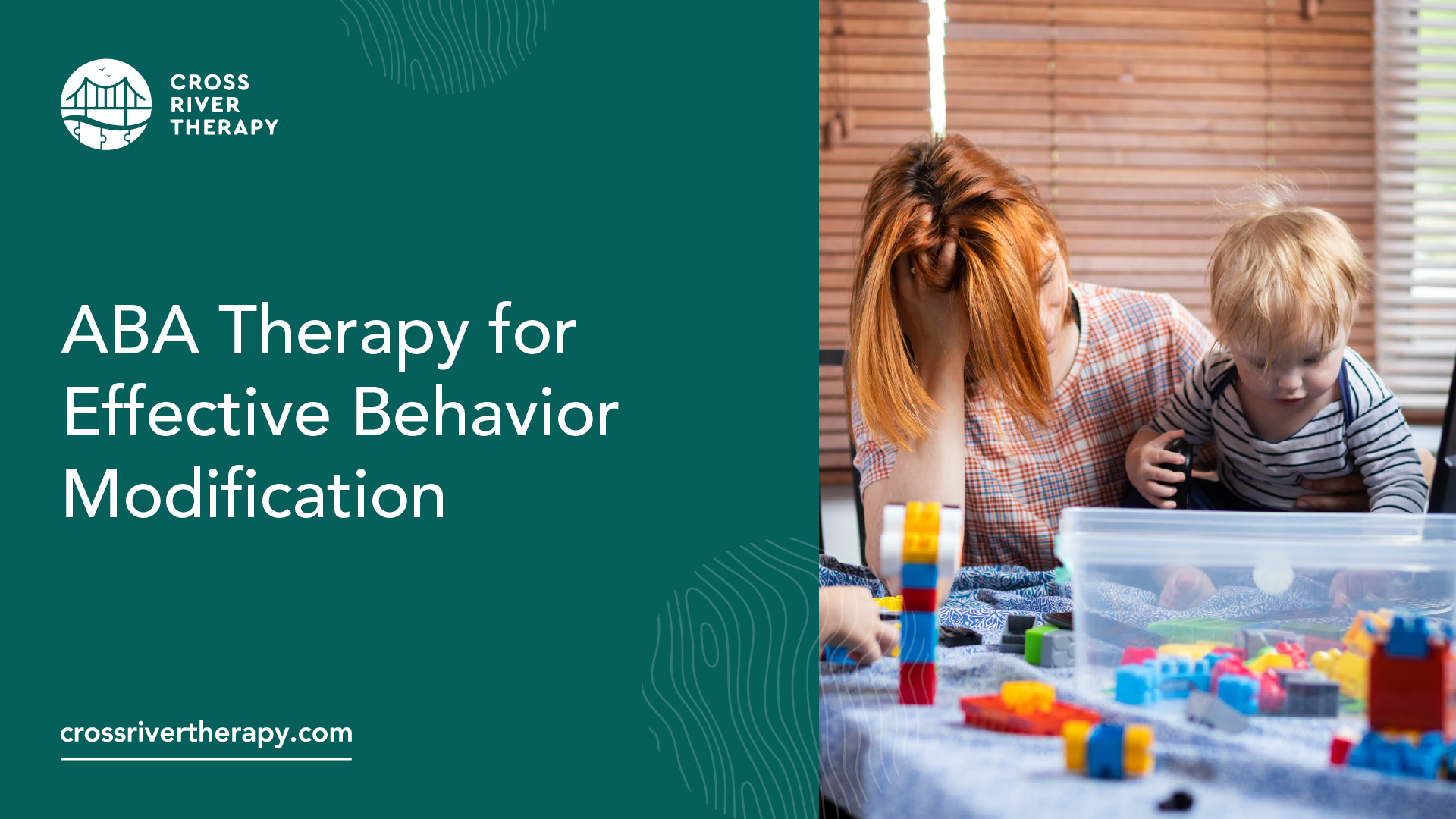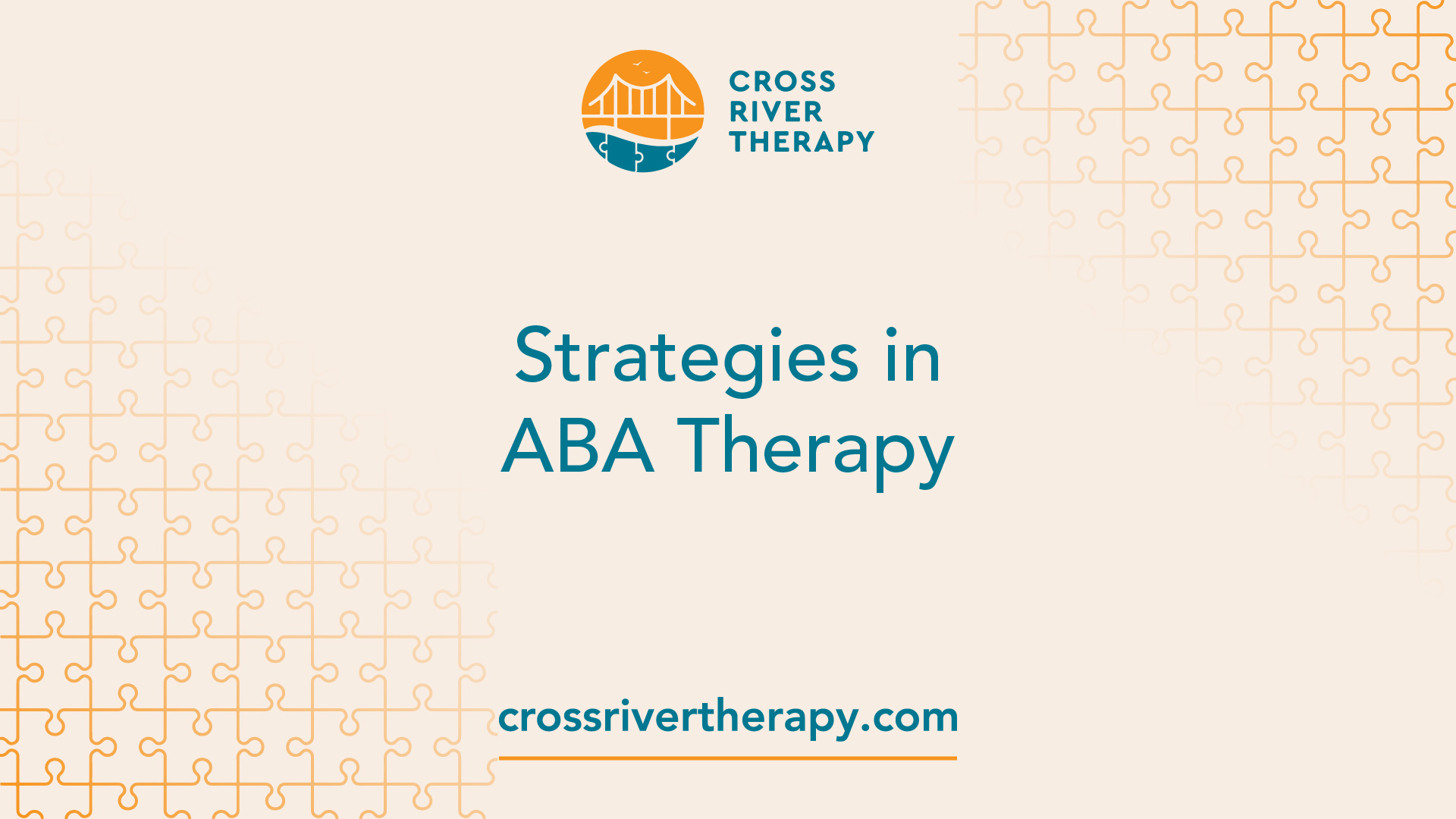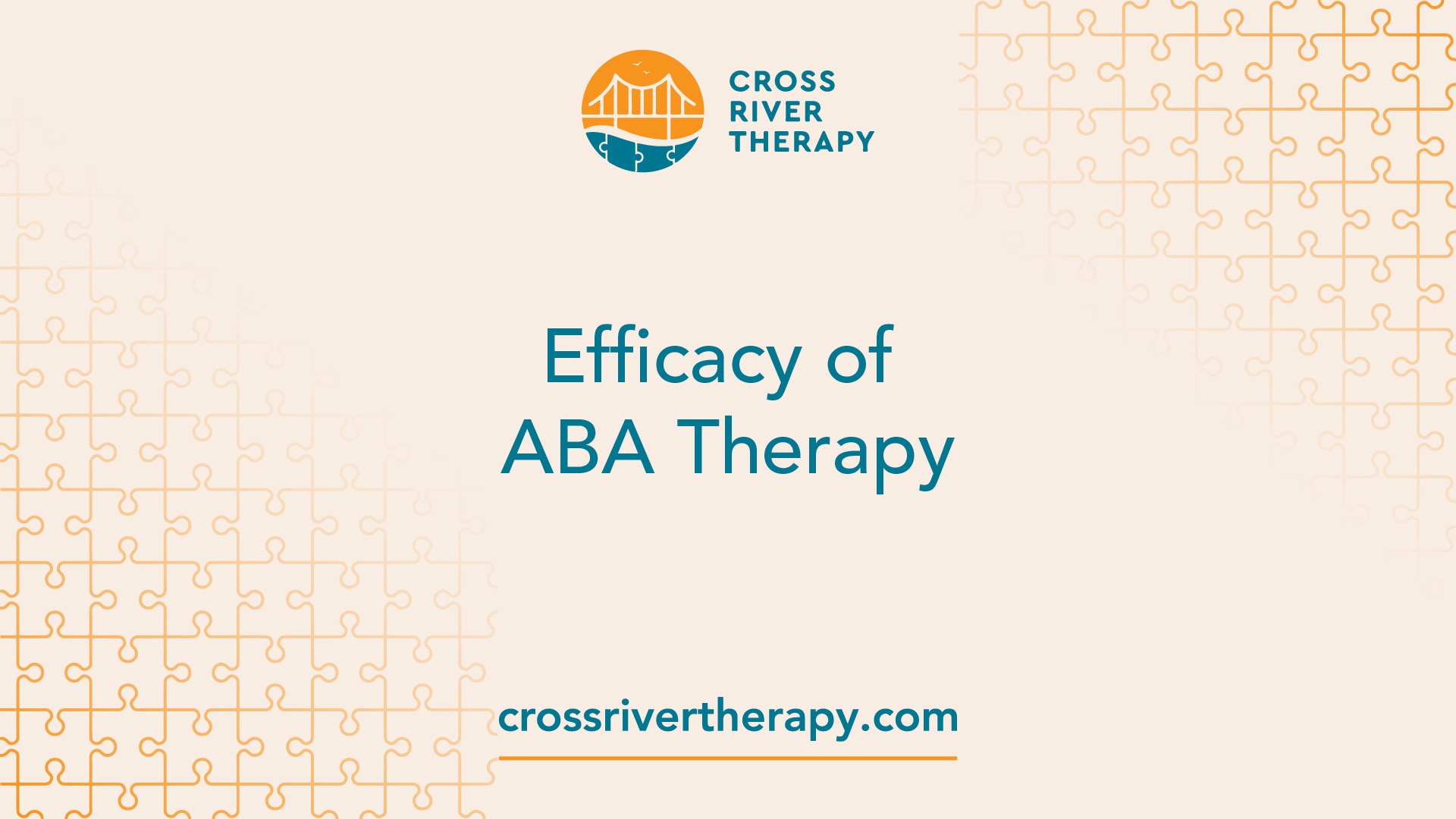ABA Therapy for Effective Behavior Modification
Explore ABA therapy and behavior modification to help your child thrive with effective strategies and support!
Understanding ABA Therapy
ABA therapy, short for Applied Behavior Analysis, is a well-established form of therapy focused on behavior modification, particularly effective for individuals diagnosed with autism spectrum disorders. It employs various techniques to increase helpful behaviors while decreasing harmful or learning-impeding behaviors.

Basics of ABA Therapy
At its core, ABA therapy is based on the principles of behavioral science, particularly operant conditioning, a concept developed by psychologist B.F. Skinner. This approach considers how behavior can be controlled by altering the consequences that follow it. ABA therapy aims to apply these principles to real-life situations, making it an essential tool for parents with children diagnosed with autism. The therapy has gained popularity due to its systematic approach and measurable outcomes, emphasizing the importance of data in evaluating progress.
ABA therapy has proven effective in various settings, from homes to schools and clinics. It is commonly used not just for autism, but also in educational environments, organizational behavior management, and other therapeutic settings.
- Behavior Modification: Focused on increasing positive behaviors and reducing negative ones.
- Data-Driven: Involves collecting data to assess and modify therapy approaches.
- Individualized Programs: Tailored to meet each child’s unique needs and strengths.
Historical Background
The roots of ABA therapy can be traced back to the late 19th century, with significant contributions from early psychologists like Ivan Pavlov. His famous studies on classical conditioning laid the groundwork for understanding behavior.
However, the term "Applied Behavior Analysis" became widely recognized in the 1960s. Pioneering psychologists, including John B. Watson and B.F. Skinner, played a crucial role in the development of behavior analysis, and later figures like Donald Baer, Montrose Wolf, and Todd Risley further advanced the field specifically for applied settings [1].
Since the 1960s, ABA therapy has been employed primarily to help children with autism and related developmental disorders. The therapy's effectiveness has been well-documented, earning it a reputation as a key component in autism treatment and interventions. Many parents look to ABA therapy as a scientifically backed method to assist their children in developing essential skills and improving behaviors.

Strategies in ABA Therapy
Effective strategies in ABA therapy can greatly assist in behavior modification for children diagnosed with autism. Three key methods include Discrete Trial Training (DTT), Antecedent-Based Interventions (ABI), and the incorporation of exercise into therapy.
Discrete Trial Training (DTT)
Discrete Trial Training is a foundational teaching strategy in ABA therapy. It involves breaking down skills into small, manageable components, which can be taught step by step. After each correct response from the child, positive reinforcement is provided to encourage learning.
Research shows that DTT has been effective; a pivotal study by Dr. O. Ivar Lovass in 1987 indicated that around 90% of participants demonstrated significant improvements after intensive ABA therapy, with 47% reaching levels that aligned their behaviors and skills with their peers [3]. This structured approach can create a strong foundation, helping children learn and adapt over time.
- Skill Breakdown: Skills are divided into smaller parts for easier learning.
- Positive Reinforcement: Rewarding correct responses encourages repeated behaviors.
- Effectiveness: Significant improvements noted in many children undergoing DTT.
Antecedent-Based Interventions (ABI)
Antecedent-Based Interventions focus on modifying the environment to prevent challenging behaviors before they occur. This includes strategies such as offering choices to children, which can help reduce defiance and encourage cooperation [2]. The goal is to create a supportive environment that minimizes triggers for undesired behaviors.
By understanding what precedes a behavior, parents and therapists can implement changes that promote positive interactions. This proactive approach helps children feel more secure and less likely to engage in challenging behaviors.
- Environment Modification: Changes made to surroundings to reduce triggering behaviors.
- Choice Offering: Allowing children to make choices enhances engagement.
- Proactive Strategy: Focuses on prevention over reaction to behaviors.
Exercise in ABA Therapy
Incorporating exercise into ABA therapy sessions has numerous benefits beyond promoting physical health. Exercise helps improve overall well-being, reduces anxiety, and increases focus during therapy sessions. Regular physical activity can enhance mood and social interaction opportunities for children, leading to more effective learning outcomes.
Structured exercise can take various forms, such as breaks for physical activities or incorporating movement into learning sessions. This approach not only contributes to better physical health but also engages children actively, contributing to a more effective learning environment.
- Physical Activity: Improves health and promotes fitness.
- Mood Enhancement: Reduces anxiety and boosts overall mood.
- Learning Engagement: Active participation can enhance focus in therapy sessions.
By understanding these strategies—DTT, ABI, and using exercise—parents can better support their children's growth through ABA therapy.
Behavioral Techniques
Positive Reinforcement
Positive reinforcement plays a crucial role in ABA therapy and behavior modification. This strategy involves following a specific behavior with a rewarding outcome, thereby increasing the likelihood of that behavior being repeated. Rewards can take many forms, including praise, toys, books, watching videos, or access to preferred locations, leading to positive changes in behavior over time.
Positive reinforcement is effective not only for encouraging desirable behaviors but also for enhancing learning experiences. Behavior analysts often employ techniques that involve observing antecedents and consequences to reinforce positive behaviors while associating negative consequences with undesirable ones.
Extinction in Behavior Modification
Extinction is another important technique in ABA therapy aimed at reducing unwanted behaviors. This strategy entails discontinuing any form of reinforcement for a specific behavior over time, leading to its gradual decline. Essentially, when an undesired behavior no longer yields rewards, it will likely be extinguished.
For example, if a child throws a tantrum to gain attention, ceasing to respond to the tantrum will eventually reduce its occurrence. Over time, the individual learns that the behavior is not effective in achieving their goals, making it less appealing.
Extinction is effective in decreasing problem behaviors and is often used alongside positive reinforcement strategies to create balanced approaches tailored to individual needs. Understanding these behavior modification techniques can be immensely helpful for parents whose children are receiving ABA therapy, especially when looking for ways to support their child's development.
Customized ABA Programs
Individualized Approach
ABA therapy is highly regarded for its personalized methodology, particularly for children diagnosed with autism. Each ABA program is individualized to meet the unique needs of every learner.
This tailored approach focuses on helping individuals work on specific skills that promote independence and success in various aspects of life [4]. Rather than relying on a one-size-fits-all strategy, practitioners assess each child's strengths and challenges to create a customized plan that yields effective results.
The process of developing a personalized ABA program involves several key steps:
- Assessment: Conducting a thorough evaluation to understand the child’s abilities, preferences, and areas needing improvement.
- Goal Setting: Collaboratively establishing clear, measurable goals for the child to work toward.
- Intervention Planning: Designing specific strategies and techniques to help the child achieve these goals.
- Progress Monitoring: Continuously tracking the child’s advancement and making necessary adjustments to the strategies.
This individualized approach not only enhances the effectiveness of therapy but also empowers parents and caregivers to play an active role in their child's development.
Role of Board-Certified Behavior Analyst (BCBA)
A crucial element of the success of ABA therapy lies in the expertise of the Board-Certified Behavior Analyst (BCBA). These professionals specialize in behavior analysis and play an essential role in assessing, analyzing, and providing targeted interventions to promote positive behavior changes.
The BCBA's responsibilities include:
- Conducting Assessments: Evaluating the child's behavior and environment to identify factors affecting performance.
- Developing Treatment Plans: Crafting individualized therapy plans based on assessments to address specific needs.
- Training and Supervising Staff: Providing guidance and training to therapists and caregivers involved in implementing interventions.
- Progress Evaluation: Regularly reviewing the child's progress and making necessary modifications to the treatment plan.
With their specialized training, BCBAs ensure that ABA therapy adheres to the best practices in behavioral analysis, ultimately leading to more successful outcomes for children. Their role is pivotal in bridging various disciplines, combining ABA therapy and cognitive behavioral therapy to create holistic treatment plans that cater to the whole child.
Through individualized programs and the expertise of BCBAs, ABA therapy continues to evolve, providing the essential support and resources needed for children to thrive.

Efficacy of ABA Therapy
Evidence-Based Practice
Applied Behavior Analysis (ABA) therapy is widely recognized as an evidence-based best practice treatment for individuals diagnosed with autism. This endorsement comes from reputable organizations such as the US Surgeon General and the American Psychological Association.
Research highlights that intensive and long-term ABA interventions improve various skills, including intellectual functioning, language development, daily living skills, and social skills. The effectiveness of ABA therapy varies depending on the focused goals, with significant improvements noted in several key areas.
A comprehensive review of 14 randomized control trials observing a total of 555 participants showcased the varying success rates of ABA therapy. The results indicated a small to medium success rate, particularly regarding general autism symptoms and socialization skills.
Furthermore, a notable 2005 study indicated that after four years of ABA therapy, 48% of children exhibited remarkable improvements in their behaviors and skills [3].
- 2012 Study: Small to medium success rate; various improvements in targeted areas.
- 2005 Study: 48% of children showed substantial improvements after four years of ABA therapy.
- 1987 Study by Dr. O. Ivar Lovass: 90% of participants improved; 47% reached levels comparable to peers.
Benefits and Outcomes
The benefits of ABA therapy are manifold, especially for children with autism seeking to enhance their daily living skills and social interactions. The 1987 landmark study by Dr. O. Ivar Lovass revealed that 90% of participants showed significant progress following intensive ABA therapy.
Notably, 47% of these children achieved developmental levels comparable to their peers, showcasing ABA's potential to nurture real-world skills and adaptability.
The specific outcomes of ABA therapy highlight its effectiveness in addressing various behavioral and developmental challenges faced by children with autism. Common areas of improvement include:
- Language Development: Enhanced communication skills.
- Social Functioning: Improved interaction and relationship-building capabilities.
- Intellectual Functioning: Better problem-solving and cognitive skills.
- Daily Living Skills: Increased independence in daily tasks.
The comprehensive impact of ABA therapy on these domains can lead to a more fulfilling and enriched life for children diagnosed with autism. For more information about ABA therapeutic approaches tailored for autism, visit our sections on aba therapy and autism interventions and aba therapy and functional assessments.
Controversies and Criticisms
Criticisms of ABA Therapy
ABA therapy has garnered significant attention, both positive and negative. Critics argue that the primary focus of ABA is to encourage autistic children to conform to neurotypical standards, which may overlook the individual needs and preferences of the child.
Some autistic self-advocates advocate for alternative approaches, asserting that therapies like speech and language services may be more beneficial for fostering skills and independence in autistic children.
A table summarizing some of the common criticisms of ABA therapy is presented below.
- Conformity to Neurotypical Standards: Critics argue that ABA encourages children to change their natural behaviors to fit societal norms, which can be detrimental.
- Possible Emotional Impact: Some children may feel pressure to suppress their natural behaviors, leading to distress or anxiety.
- Historical Issues: Concerns about the historical application of behavioral techniques that some believe may be abusive.
- Labeling All ABA as Abuse: Activists have called for reform in ABA practices, labeling overly rigid implementations as harmful.
Defenders of ABA therapy counter these claims by emphasizing that its goal is not to alter the thoughts or feelings of neurodiverse children, but to help them leverage their strengths to gain independence and actively participate in society. The focus is on supporting their development while acknowledging and embracing their neurodiversity [7].
Autistic Perspectives
Autistic individuals and advocates have voiced various concerns regarding ABA therapy. Many express that current practices may not align with their experiences or identities.
There is a growing movement among autism rights and neurodiversity activists who challenge certain ABA-based interventions, referencing issues related to historical practices and current methodologies. They question whether traditional ABA truly caters to the needs and well-being of autistic individuals.
The perspectives of autistic individuals highlight the importance of understanding Autism Spectrum Disorder (ASD) from within the community. Some individuals argue for more personalized approaches that resonate with their realities rather than applying a one-size-fits-all method long associated with behavior modification.
Engaging with the autistic community may lead to more inclusive practices that align better with their needs, which can be further explored through discussions on ABA therapy for autism diagnosis and ABA therapy and autism therapies.
Recognizing and addressing these concerns within the context of ABA therapy and behavior modification is crucial for its continued evolution and relevance in supporting autistic individuals and their families.
References
[1]: https://www.umassglobal.edu/news-and-events/blog/what-is-applied-behavior-analysis/
[2]:
[3]: https://abacustherapies.com/aba-therapy-pros-and-cons/
[4]: https://www.autismspeaks.org/applied-behavior-analysis
[5]: https://gsep.pepperdine.edu/blog/posts/aba-techniques-strategies-for-behavior-analysts.htm
[6]: https://www.autismparentingmagazine.com/aba-principles/



